The Ha Giang Loop, located in the far north of Vietnam, has become a must-visit for travelers seeking adventure and spectacular landscapes. But how much time is needed to fully enjoy it? Here is a detailed guide to help you plan your itinerary.
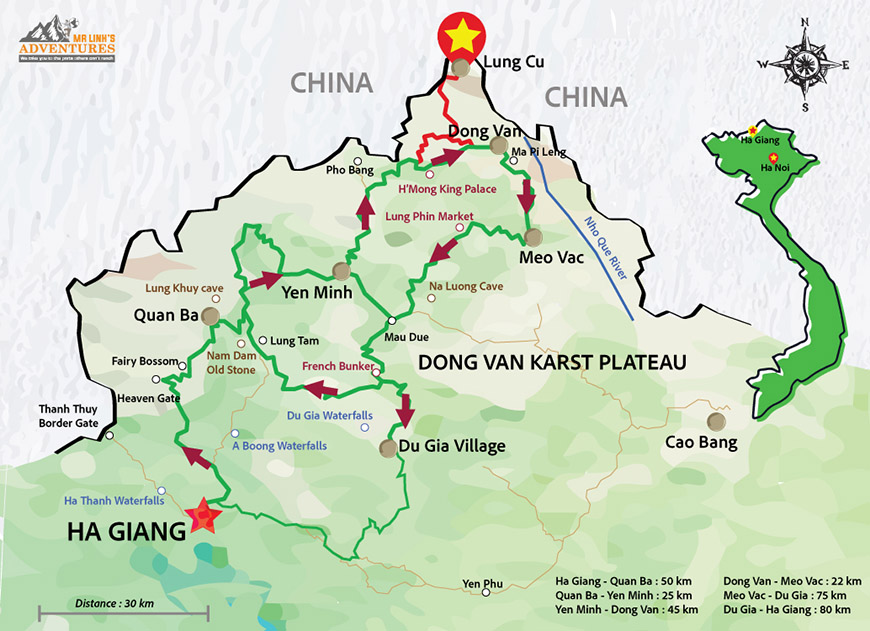
Ha Giang Loop, more than a road trip
The Base: Distance and Minimum Duration
The main loop covers 384 kilometers through stunning karst landscapes, deep gorges, and traditional villages. While technically it can be completed in 3 days, this minimum duration only allows for a quick overview of the region.
Different Itinerary Options
1. Express Itinerary (3 days)
The three-day option represents the absolute minimum to travel the Ha Giang Loop. The first day takes you from Ha Giang to Dong Van, a journey of about 113 kilometers requiring over 5 hours of road travel. This leg takes you through the first karst landscapes and allows you to discover the Tam Son Valley. The second day is dedicated to the stretch between Dong Van and Meo Vac, including the famous Ma Pi Leng Pass, considered one of the most spectacular in Vietnam. You then continue south before heading back up to Ha Giang. The third day completes the circuit by returning to your starting point, with quick stops in ethnic villages along the way. This itinerary is very condensed and only allows for brief photo stops.
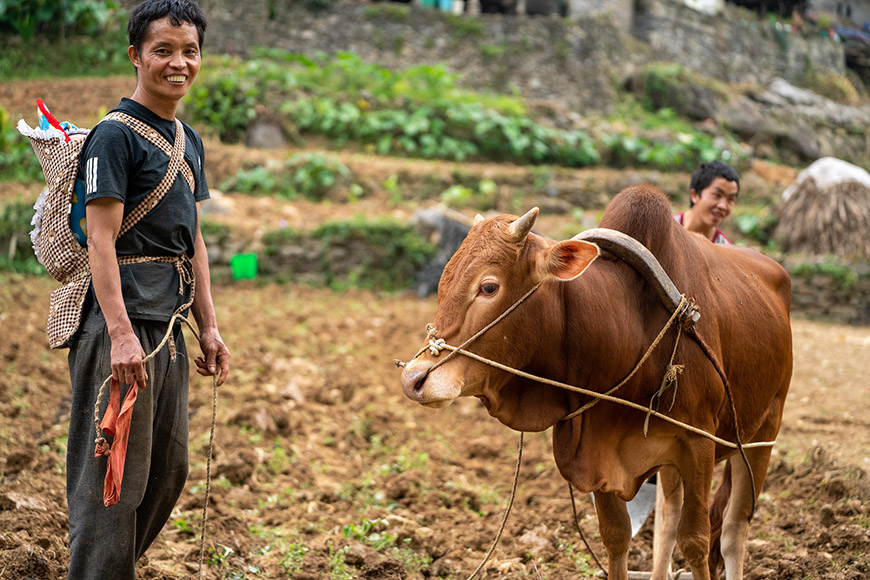
Magical moments along the Ha Giang Loop - Source : Mr Linh's Adventures
2. Comfort Itinerary (4-5 days)
With four to five days, the experience becomes significantly more enriching. The first day remains similar with the journey to Dong Van, but now you can stop longer in the Tam Son Valley and visit local markets. The second day can be entirely devoted to exploring the surroundings of Dong Van, including an excursion to the Lung Cu Flag Tower, the northernmost point of Vietnam. The third day allows you to fully enjoy the Ma Pi Leng Pass and spend the night in Meo Vac to immerse yourself in the local atmosphere. The fourth day takes you to Du Gia, a peaceful village nestled in the mountains, where you can stay in an authentic homestay. The fifth day allows for a leisurely return to Ha Giang with stops in H'mong and Tay villages.
3. Immersive Itinerary (6-10 days)
This option allows for a true immersion in the region. The first three days follow a similar pattern to the comfort itinerary, but with more time to explore each place. From the fourth day onwards, you can venture onto less frequented secondary roads, especially around Meo Vac and Du Gia. You have time to hike in terraced rice fields, participate in the daily activities of ethnic villages, and discover hidden waterfalls. The additional days also allow for exploring the Bao Lac region, guided treks by locals, and spending several nights in different homestays to experience the cultural diversity of the region. This slower pace also allows for calmly facing weather challenges and adjusting your itinerary according to local recommendations.
The immersive itinerary also offers the opportunity to synchronize your trip with weekly markets, true festivals of colors and traditions. You can attend the Dong Van market on Sundays, the Meo Vac market also on Sundays, or the Lung Phin market on Thursdays. These markets are special moments to observe the traditional costumes of different ethnicities and taste local specialties.
Regardless of the chosen itinerary, it is essential to remember that the Ha Giang Loop is not a race. The beauty of this region lies as much in its spectacular landscapes as in the unexpected moments and spontaneous encounters along the way. The more time you have, the more these magical moments have a chance to occur.
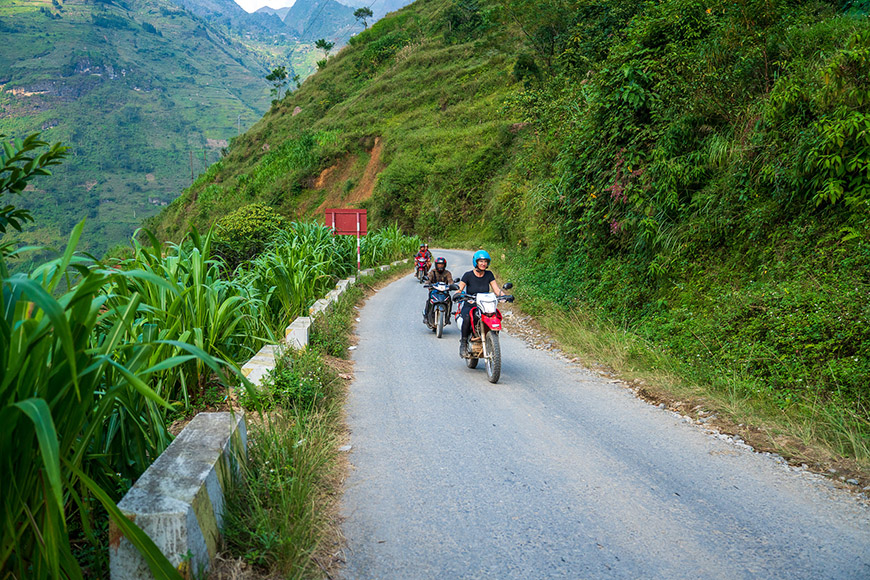
Unforgettable road trip along the Ha Giang Loop - Source : Mr Linh's Adventures
Factors to Consider
Several elements can influence the duration of your trip:
- ✓ Season (March-May and September-November are ideal)
- ✓ Your experience with motorbikes
- ✓ Road conditions
- ✓ Your interests (photography, culture, hiking...)
- ✓ Weather
- ✓ Your preferred travel pace
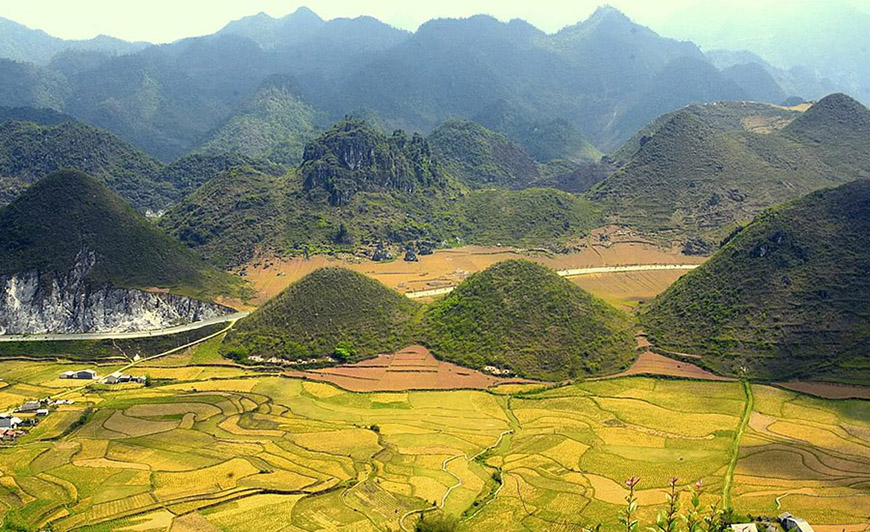
Fairy Bosom in Quan Ba - Source : Mr Linh's Adventures
Ha Giang Loop Seasons: Periodic Guide
Optimal Periods: March-May and September-November
Spring (March-May) and autumn (September-November) are the best times to explore the Ha Giang Loop. The climate is mild, with pleasant temperatures ranging between 20 and 25°C during the day. The sky is generally clear, offering excellent visibility of the mountainous landscapes. The colors are particularly vibrant, with terraced rice fields changing hue according to the months. In March-April, the slopes are adorned with plum and peach blossoms, while in September-October, the rice fields take on golden tones before the harvest.
Summer: June-August
The rainy season extends from June to August, making driving conditions more challenging. Precipitation can be abundant and sudden, increasing the risks of slipping and rockfalls. Humidity is high, and temperatures can reach 30°C. However, this period offers exceptional lush green landscapes, with rice fields at their peak growth. If you choose to travel in summer, pack appropriate waterproof gear and be more flexible in your planning to cope with the weather.
Winter: December-February
Winter in the Ha Giang region can be particularly harsh. Temperatures regularly drop below 10°C, even reaching 0°C at higher altitudes. Fog is common, limiting visibility and the appreciation of the landscapes. However, this period offers a unique experience with occasional snow on the peaks, a rare phenomenon in Vietnam. Mornings are often misty, creating a mysterious atmosphere in the valleys. If you travel in winter, warm gear is essential: gloves, a warm jacket, and multiple layers of clothing.
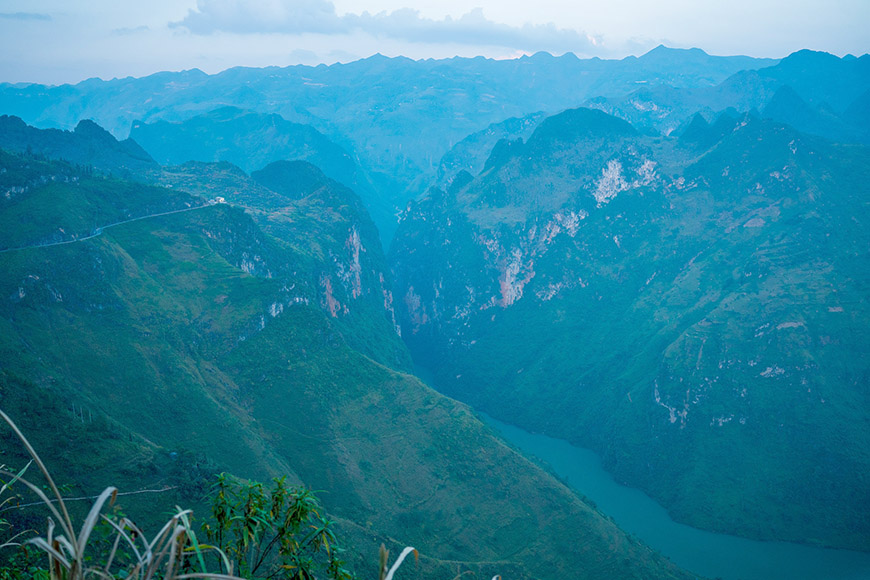
Magical Ma Pi Leng Pass - Source : Mr Linh's Adventures
Best Compromises
For an optimal experience, prioritize:
- • Late March to early May: for spring flowers and stable weather
- • October to early November: for autumn colors and mild temperatures
These periods combine favorable weather conditions, spectacular scenery and interesting cultural activities. They also allow you to avoid the tourist peaks while taking advantage of clement weather for mountain driving.
Whichever season you choose, the Ha Giang loop remains an unforgettable experience. Each season brings its own new discoveries and challenges, making this trip a unique adventure in Vietnam's far north.
Good to Know
The choice of period not only influences travel comfort but also cultural experience. Festivals and traditional markets follow the lunar calendar. Tet (Lunar New Year, usually in January or February) is a festive period but can complicate travel due to crowds. The harvest season (October) offers authentic rural life scenes, with locals working in terraced fields.

Don't forget your camera! - Source : Mr Linh's Adventures
Final recommendations
To truly immerse yourself in the beauty and culture of this region, we recommend allocating 4 to 7 days for your journey. This timeframe provides the perfect balance, allowing you to explore iconic sites at a leisurely pace, adapt to unforeseen circumstances like weather changes or road closures, connect with warm and welcoming locals, and witness breathtaking natural wonders. With extra time, you can even embark on off-the-beaten-path adventures, discovering hidden gems and unique experiences that will make your trip truly unforgettable.
The Ha Giang Loop is much more than just a road trip, it's a true immersion in one of Vietnam's most fascinating regions. Take the time you need to savor every moment, from breathtaking mountain passes to encounters with ethnic minorities.
Running out of ideas? Wondering how long the journey should take? Take a look at these programs!